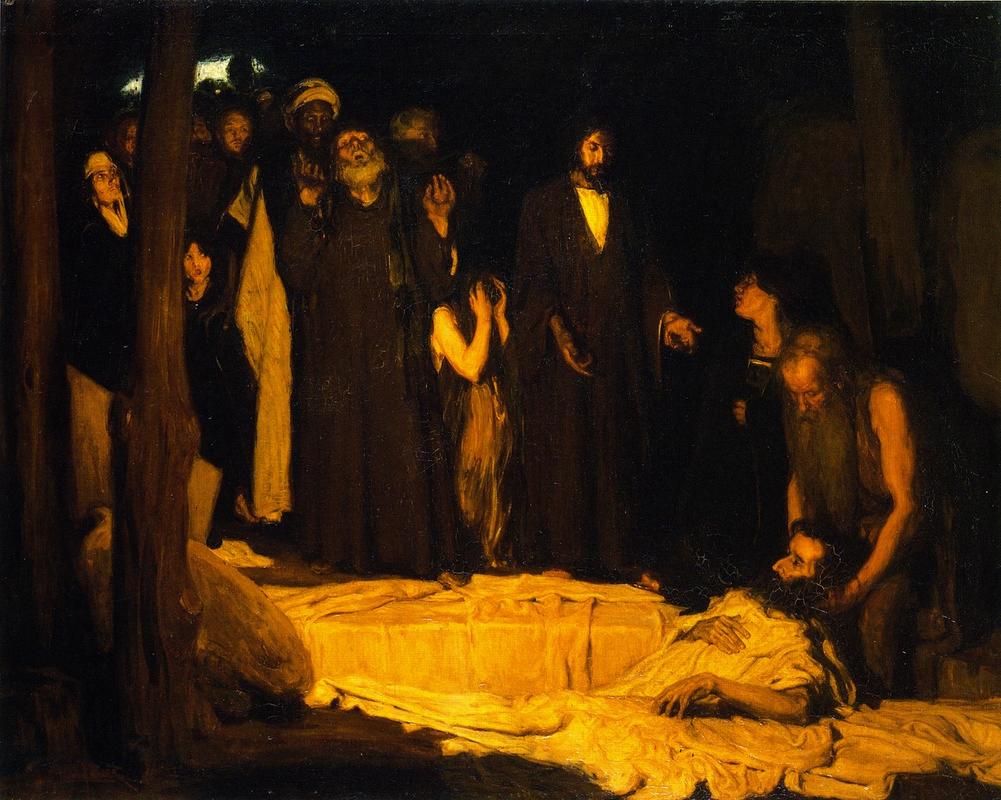More about The Resurrection of Lazarus

Contributor
We live in a systemically racist world. The reason that there isn’t more equity and equality is by design. But that makes the success of the select few who can pull themselves out of the cracks that much more inspiring. That’s essentially the story of Henry Ossawa Tanner and his painting The Resurrection (or Raising) of Lazarus.
In 1897, Henry Ossawa Tanner gained international acclaim by winning a medal at the Paris Salon for this painting, a rarity for an American artist and a first for an African American. It was subsequently bought by the French government, and Tanner’s name was now cemented amongst the legends. It helped that he wasn’t in America. While no one will make the argument that Europe wasn’t also racist, they were a hell of a lot better than a country that just 30 years prior had a civil war where the root of the fighting was tied to whether they should keep people like Tanner as slaves or not.
It’s not hard to see how Europeans might salivate at the mouth over a painting like this. It’s got the look and feel of a Renaissance painting, and it’s biblical in theme. The Resurrection of Lazarus depicts Jesus using his abilities to bring back his friend Lazarus from the dead.
Probably the most powerful aspect of the painting is not Jesus or even Lazarus, but instead, the group of people who are watching the action take place. Everyone has a distinct look on their face, which is where the story really lies. We know that Jesus just put in work on his homie Lazarus. But these people were probably skeptical until it happened. The painting captures their reactions as if it was a photograph taken in real-time by Tanner himself.
On top of that, if you look closely, you can see a very dark-skinned man toward the top of the painting. No, the man isn’t the subject of the painting. But his mere existence is without a doubt intentional. History has tried to collectively forget or ignore that Black and brown people existed and populated the areas depicted in the bible. Tanner made an effort to put his people back into the spaces where they always belonged, and because it wasn’t the focus of the painting, it wasn’t given any mind. That’s as brilliant as it is bold. So many in Tanner’s position might have played it safe and not included a dark-skinned man. And given the context, you might not blame them. But Tanner not only didn’t play it safe, he also did it before he had even made a name for himself. It’s truly inspirational.
France really loves this painting. It’s been in their care for more than a century and only recently made its debut in the United States. More than one hundred years after its creation, the painting that gave African Americans a space in the art world traveled to a country that still grapples with their equality. The contrast between the story of this painting and the current state of things in the United States is sobering, to say the least.
Sources
- Britannica. “Henry Ossawa Tanner: American painter” Accessed February 20, 2021. https://www.britannica.com/topic/The-Raising-of-Lazarus
- Duggan, Bob. “Resurrecting the Father of African-American Art” Big Think. February 22, 2012. https://bigthink.com/Picture-This/resurrecting-the-father-of-african-am…
- Hage, Emily. “Making the Modern Divine: The images of Henry Ossawa Tanner” America Magazine. March 19, 2012. https://www.americamagazine.org/issue/5133/art/making-modern-divine
Featured Content
Here is what Wikipedia says about The Resurrection of Lazarus
The Resurrection of Lazarus is a painting by Henry Ossawa Tanner entered into the Paris Salon in 1897 and winning a third place medal. During his lifetime, this was the painting for which he was most known, his "masterwork". Since his death in 1937, secular tastes have pushed The Banjo Lesson to the top place in public esteem. The work was purchased by the French government (a rare honor for someone not a French citizen) for display in its Luxemburg museum. Today the painting is held by the Musée d'Orsay.
During Tanner's lifetime, the painting was never exhibited in the United States, having been bought at its first exhibition in France. It was finally exhibited in the U.S. in 2012 as part of the show Henry Ossawa Tanner: Modern Spirit, organized by the Pennsylvania Academy of Fine Arts.
Check out the full Wikipedia article about The Resurrection of Lazarus












